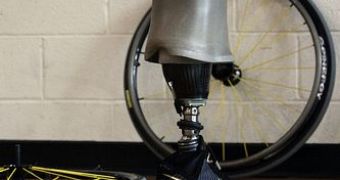A recent study at the Center of Orthopedic Osseointegration (COO) and the orthopedic clinic at Sahlgrenska University Hospital in Mölndal, shows for the first time that prostheses attached to titanium implants in the bones of patients with above-the-knee amputations, have positive results.
The research was carried out by the Sahlgrenska Academy and Sahlgrenska University Hospital and was presented at the International Society of Orthopedic Surgery and Traumatology (SICOT) annual international conference in Gothenburg.
The OPRA study (Osseointegrated Prostheses for the Rehabilitation of Amputees) began in 1999 and focused on 51 patients, aged between 20 and 65, out of which 55% were male, who had been amputated above the knee, over a two-year follow-up period.
Rickard Brånemark, researcher at the Sahlgrenska Academy and orthopedic surgeon at Sahlgrenska University Hospital said that this “treatment improves both function and quality of life in more than nine out of ten patients.”
“It’s important to point out that this treatment is intended for younger amputees and is not suitable for patients who have had amputations as a result of vascular disease,” he added.
Every year, over 2000 leg amputations are carried out in Sweden, and while most of them are on older patients suffering from diabetes or impaired blood circulation, some are on younger patients.
A traditional leg prosthesis is attached to the amputated leg by using a socket, but this new technique screws the prosthesis to a titanium implant attached to the bone.
“Attaching prostheses directly to the bone with an implant has long been an unattainable vision, and this has been in development for more than 20 years,” says Brånemark.
Now, this revolutionary treatment is set for an international breakthrough, and should be able to treat other amputations like fingers and arms.
This “miraculous” process is called osseointegration and was developed in the 1960s by professor Per-Ingvar Brånemark, who discovered that titanium was not rejected by the body, on the contrary, it fuses with the surrounding bone tissue.
At the beginning it was used to replace lost teeth, in titanium dental implants, an method spread worldwide that gave a lot of people the opportunity of a better life.
These studies are the result of a collaboration between Sahlgrenska University Hospital, the Department of Orthopaedics and Department of Biomaterials at the Sahlgrenska Academy, and the BIOMATCELL VINN Excellence Center of Biomaterials and Cell Therapy at the University of Gothenburg.

 14 DAY TRIAL //
14 DAY TRIAL //